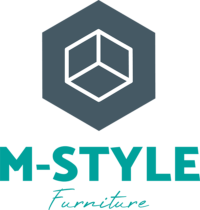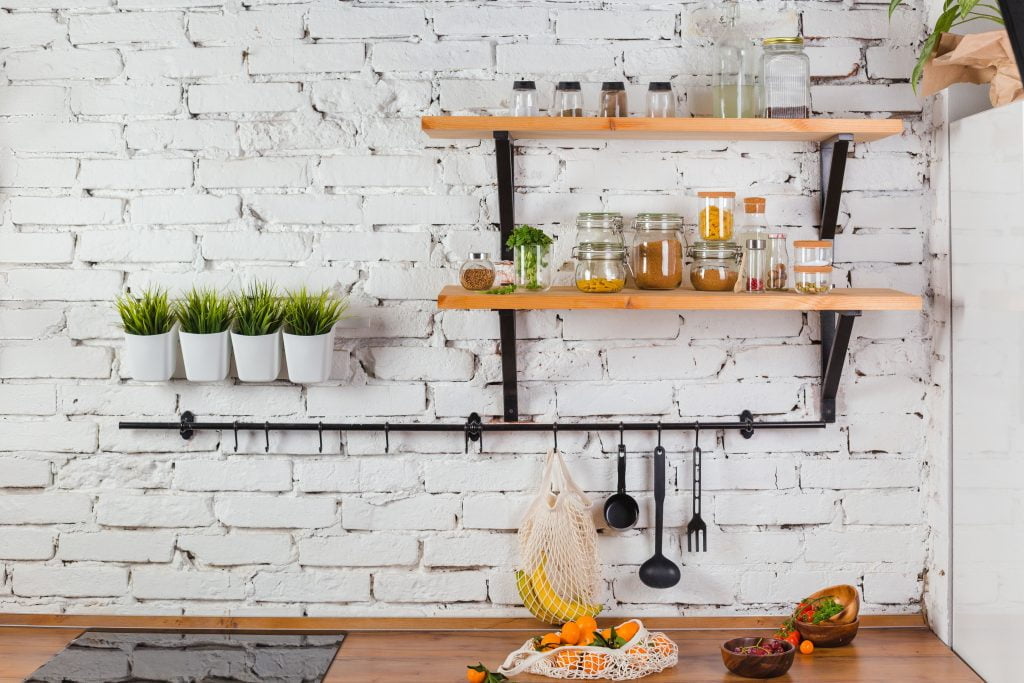[ad_1]
| Veneer Bricks | Faux Brick Veneer Panels | |
| Material | Masonry | High-density polyurethane |
| Face Size | 2 to 2 1/4 inches high by 8 inches long | 27 inches high by 48 inches long |
| Thickness | 1/4 inch | 5/8 to 3/4 inch |
| Cost | $7 to $10 per square foot | $10 to $15 per square foot ($80 to $120 per panel) |
| Fire Tolerance | Fireproof | Fire-rated but not fireproof or heatproof |
| Cleaning | Soap and water | Soap and water |
| Water | Water-resistant after sealing | Waterproof |
Veneer Brick
The best material for creating a brick backsplash is veneer or face brick, a type of manufactured stone.
Veneer brick is attractive, cost-effective, thin, and fireproof. It’s meant only for decoration rather than for building. It comes in a variety of colors and styles: red, gray, multi-colored, weathered, smooth, and more.
Veneer brick looks like authentic brick because it is a masonry product. Most veneer brick that is available to do-it-yourselfers is not true brick. Instead, it’s a type of manufactured veneer stone made in molds and cured like concrete, not fired like brick.
Manufactured veneer stone is made of Portland cement, aggregates, and iron oxides. Since it is not a through-body unit, the coloration lies on the surface. Extruded through-body thin bricks can be difficult for homeowners to find.
What Is Through-Body?
Through-body means that the color and material extend all the way through the building unit. Through-body brick or tile wear well since chips only reveal more of the same material below.
Veneer brick is light enough that it can adhere to the backsplash wall without the need for lower support. It is applied with thinset mortar (the same material used for tile) or with glue.
Grout applied to the joints between the bricks is purely for decorative purposes.
Faux Brick Veneer Panels
Veneer brick panels, sometimes called faux veneer or faux brick, can be an alternative brick backsplash. It’s perfect for do-it-yourselfers who want to quickly install the backsplash, without dealing with mortar or grout.
Made of polystyrene, these large-format panels contain the impressions of many bricks (around 45 to 55) on a single panel.
As a polymer, veneer brick panels do offer the advantage of being waterproof, no sealing needed. They’re so lightweight that they attach to the wall with construction glue.
Veneer panels can be easily crushed or chipped upon impact. Also, though many types of veneer panels are rated to ASTM E84 Class-A fire standards, this does not mean that the product is fireproof. It only ensures that the panel has certain surface-burning characteristics.
What About Using Real Bricks?
Full-size clay or concrete brick, the type used for building walls or creating pathways, is generally is not an option for kitchen backsplashes.
While full-size brick is cheap, it is not practical for backsplashes due to its size and weight.
A full-size brick is around 4 inches by 8 inches by 2 inches thick. A full-size brick would eat up 4 inches of a 25-inch kitchen counter’s limited depth. Also, because the bricks would need to rest on the counter, their weight (about 5 pounds per square foot) would be too much for the counter to handle.
Durability
As a hard surface, a brick veneer backsplash wears better than painted drywall. Compared to other types of hard surfaces, though, a brick backsplash made of molded veneer bricks can be less durable since chips or scratches remove the top color and reveal the gray cement-like body. Most manufacturers have touch-up paint for this purpose. Extruded thin bricks will not have this problem.
Size and Spacing
A brick backsplash can extend from the top of the kitchen countertop to as high as the ceiling. Or, depending on location, it may stop at the bottom of the wall cabinets.
Brick veneer is sized to have the same side dimensions as actual brick: around 2 inches high by 8 inches long. This type of brick veneer comes in single units the size of one brick.
Since wall cabinets tend to rise anywhere from 18 to 24 inches above countertop height, faux brick panels are perfectly sized for that gap: usually 26 to 27 inches high. An 8-foot stretch of countertop backsplash could then be covered by just two faux brick panels.
Brick veneer or panels increase the thickness of the wall by 1/4 to 3/4 inch, so electrical boxes will need to be extended outward.
Brick Backsplash Cost
A brick backsplash will cost about $250 to $350 for 16 square feet. Brick veneer comprises the majority of that cost: about $150 to $200 for 18 to 20 square feet.
Another $100 to $150 will cover the thinset mortar, grout, and specialty tools that you may not already have on hand.
Faux brick veneer panels cost about 25 to 30 percent more than brick veneer. But the extra cost might be recouped because few other materials or tools need to be purchased.
Maintenance and Cleaning
One of the downsides of using brick for a backsplash is that it is difficult to clean. Because brick is porous and potentially can soak up food spills, it must be coated.
The joints between the bricks also make cleaning brick a challenge. The joints, too, must be sealed.
Sealing the Brick and Mortar
Several layers of clear water-based sealer are applied to the entire surface of the brick backsplash. If painted brick is your desired look, the paint will itself act as the sealer for the brick.
[ad_2]
LIVING IN STYLE
M-Style is a company with 10 years of experience in furniture industry, our employees are available to execute any individual project, according to the client’s needs, so that you feel comfortable in the home you have dreamed of.

